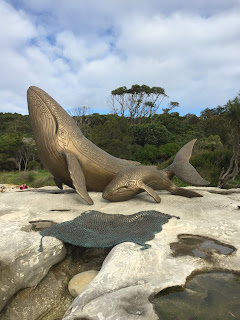Missionary work during the Covid19 pandemic is proving to be quite an adventure for us. This week we found out we had very limited contact with a person infected with the virus. The direction we have received from health officials is that we do NOT have to quarantine. In fact, they will not test us unless we begin to feel ill. So we thought we were free and clear; we would just keep to ourselves and watch for any possible symptoms which is in line with the directive we received. But we have heard that a few employees who may be starting to come back to work in the office are a bit unsure about us being in the building regardless of our own office's isolation. So to help alleviate any fears, we have chosen to self-quarantine and work from home. We are hoping that all will feel at ease with our decision and it will help put their minds to rest. For the next nine days (we've already done 5) Don will work at his little office we set up in the extra bedroom and I will take the large desk in the living room. This doesn't mean we can't go out or shop. We will just stay away from the office for the time being.
However, one of our young missionaries has now contracted pneumonia. So our prayers are for his recovery. A missionary couple in quarantine received word that his father had passed away. They cannot leave the country and will have to watch the funeral as it is ZOOMed to them. Our hearts are with the mission president and his sweet wife as they care and watch out for everyone during this difficult time.
Multiply these circumstances millions of times the world over and we have a better picture of how difficult this is for everyone. Part of my missionary work is to review some humanitarian projects that relate to helping in countries where there is an ever-growing need for adequate medical services and supplies, hygiene care with improved washing and sanitation, and increased food supplies. It is an understatement to say this is unlike anything we've ever experienced. In some ways, I wish we could visit with our parents as they lived through times thought to have been "unlike anyone had ever experienced" also. So, we gamely go on.
From Friday, the New South Wales government lifted some restrictions regarding how many people could gather in homes, in restaurants and pubs, and allowed many stores to reopen. There are still self-distancing guidelines being scrutinized carefully. Our Saturday outing was to Botany Bay where James Cook first landed in 1770. And now the history lesson for the week . . .
Botany Bay is located outside of Sydney and is now officially part of the Kamay Botany Bay National Park. I believe Kamay is the aboriginal name for the bay. This is where Cook and his ship, Endeavour, first anchored while on their first of three voyages of exploration to the lands now called Australia and New Zealand but were then just thought of as a possibility and referred to as the "undiscovered southern land."
This monument to James Cook was erected on the 100th anniversary of his landing. This is actually known as the James Cook Landing Place. Other monuments to him are found in Hyde Park in Sydney also. In the park are wonderful plaques outlining what happened here and the conflict that many European explorers fostered due to their lack of knowledge of indigenous people and their customs. Cook and his men did not wait to be invited onto indigenous land and even shot at the two aboriginal men waving them off having misconstrued their waves as welcoming gestures. Even when lances were thrown at them, Cook had several shots fired at them.
Here, Cook and his party stayed eight days presumably to find fresh water for the next part of their journey. While there, the ship's botanist gathered specimens of flora and fauna.
Here is the stream where the crew first found water and restocked their supplies with the early indigenous people watching. There are a number of signs explaining the significance and effect of the Cook landing on the indigenous people. This monument (above) was erected by Swedish Australians to honor Daniel Solander who was the first Swede to step foot in Australia.
Another monument in the park - This one remembers a crew member who died and was buried near here on the 2nd of May 1770 just three days after they arrived. There are also burials of Aboriginal Australians in the park.
Since this is the 250th anniversary year of the landing, three pieces of public art have been installed to remind everyone of the story from both the Aboriginal Australians and European viewpoints of the Endeavour's arrival at this place. We figured we must be some of the few tourists that have even seen these as they have only recently been installed as part of the anniversary activities that were to take place on April 29. Yet, due to the virus, the remembrance was cancelled, the irony of which is not lost on those wanting reconciliation due to the tremendous decimation of their indigenous peoples.
The artwork on the left is entitled "Eyes of the Land and the Sea" and the other is just "The Whales." The third sculpture is of two canoes with fishing spears and nets inside. The flag pole in the park also has three flags: The Australian flag, the flag of New South Wales, and the Aboriginal Australian flag. The aboriginal flag has black to represent the aboriginal people of Australia, the yellow circle represents the sun as the giver and protector of life and the red represents red ochre or the red land that is so important to the aboriginal spiritual connection to the land. Each one hard to see from this picture.

















No comments:
Post a Comment